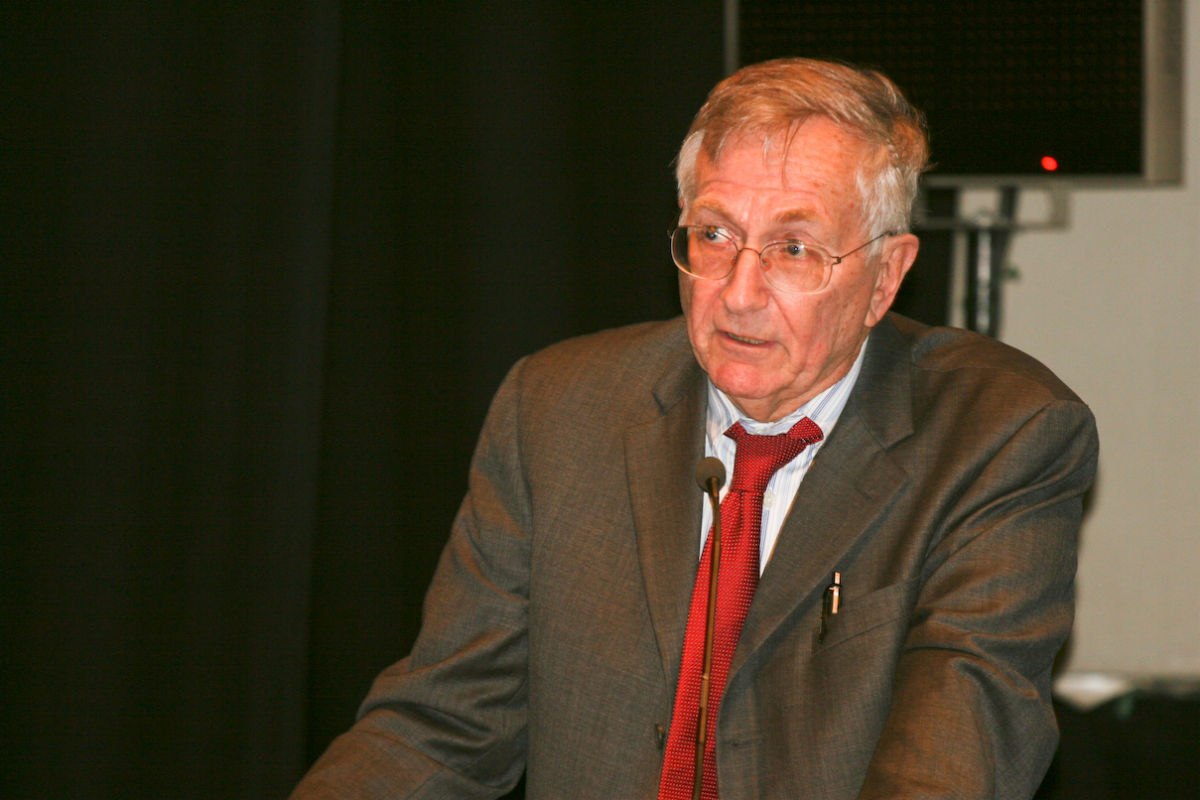
Seymour Hersh (Photo by Giorgio Montersino, CC BY-NC 2.0)
Max Fisher, now at Vox, learned well during his apprenticeship under Marty Peretz at The New Republic. This week, he was among the first to try to smear Seymour Hersh’s piece in the London Review of Books, which argued that pretty much everything we were told about the killing of Osama bin Laden was a lie. Most importantly, Hersh’s report questions the claim that Washington learned of OBL’s whereabouts thanks to torture—a claim popularized in the film Zero Dark Thirty.
There’s a standard boiler plate now when it comes to going after Hersh, and all Fisher, in “The Many Problems with Seymour Hersh’s Osama bin Laden Conspiracy Theory,” did was fill out the form: establish Hersh’s “legendary” status (which Fisher does in the first sentence); invoke his reporting in My Lai and Abu Ghraib; then say that a number of Hersh’s recent stories—such as his 2012 New Yorker piece that the United States was training Iranian terrorists in Nevada—have been “unsubstantiated” (of course, other reporters never “substantiated” Hersh’s claim that Henry Kissinger was directly involved in organizing the cover-up of the fire-bombing of Cambodia for years—but that claim was true); question Hersh’s sources; and then, finally, suggest that Hersh has gone “off the rails” to embrace “conspiracy theories.”
For Fisher, the “many problems” with Hersh’s report are its “contradictions”—the fact that the Pakistani ISI or the US CIA acted, if we believe what Hersh writes, incoherently. “When fact seem to squarely contradict his claims,” Fisher writes—though he should have written, when facts seem to contradict how I, Fisher, believe intelligence agencies should act—Hersh’s “answer is that this only goes to show how deep the rabbit hole goes.”
Fisher was too quick by half. For the rabbit hole indeed goes deep. Just after he posted his piece, NBC news—not just “mainstream” but solidly in the Obama White House camp—confirmed one key claim in Hersh’s report: “Two intelligence sources tell NBC News that the year before the U.S. raid that killed Osama bin Laden, a ‘walk in’ asset from Pakistani intelligence told the CIA where the most wanted man in the world was hiding—and these two sources plus a third say that the Pakistani government knew where bin Laden was hiding all along.” Other sources likewise confirmed at least the broad outlines of Hersh’s counter-narrative, and as they did, the pushback against Hersh went, as Adam Johnson at FAIR put, from “this is a lie” to “what’s the big deal, we knew this all along” (everybody should follow Johnson’s twitter feed).
Fisher’s not alone in accusing Hersh of frivolity (I had hopes for Fisher, who after the New Republic implosion wrote a thoughtful reflection on that magazine’s racism. But he’s since done one of the stupider pieces I’ve read on Ecuador’s Rafael Correa; Vox seems to be trying to fill the vacuum left by The New Republic when it comes to writing silly things about Latin America). To accuse Hersh of falling under the thrall of “conspiracy theory” is to repudiate the whole enterprise of investigative journalism that Hersh helped pioneer. What has he written that wasn’t a conspiracy? But Fisher, and others, believe Hersh went too far when in a 2011 speech he made mention of the Knights of Malta and Opus Dei, tagging him as a Dan Brown fantasist. Here’s Fisher, in his debunking of Hersh’s recent essay: “The moment when a lot of journalists started to question whether Hersh had veered from investigative reporting into something else came in January 2011. That month, he spoke at Georgetown University’s branch campus in Qatar, where he gave a bizarre and rambling address alleging that top military and special forces leaders ‘are all members of, or at least supporters of, Knights of Malta.… many of them are members of Opus Dei.’”
But here’s Steve Coll, a reporter who remains within the acceptable margins, writing in Ghost Wars about Reagan’s CIA director, William Casey: “He was a Catholic Knight of Malta educated by Jesuits. Statues of the Virgin Mary filled his mansion.… He attended Mass daily and urged Christian faith upon anyone who asked his advice…. He believed fervently that by spreading the Catholic church’s reach and power he could contain communism’s advance, or reverse it.” Oliver North, Casey’s Iran/Contra co-conspirator, worshiped at a “’charismatic’ Episcopalian church in Virginia called Church of the Apostles, which is organized into cell groups.”
Not too long ago, Ben Bradlee Jr. (son of no less an establishment figure than the editor of The Washington Post), could draw the connections between the shadowy national security state and right-wing Christianity: Iran/Contra was about many things, among them a right-wing Christian reaction against the growing influence of left-wing Liberation Theology in Latin America. Likewise, the US’s post-9/11 militarism was about many things, among them the reorganization of those right-wing Christians against what they identified as a greater existential threat than Liberation Theology: political Islam. Fisher should know this, as it was reported here, here, and here, among many other places.
Eager to debunk Hersh, it’s Fisher who has fallen down the rabbit hole of imperial amnesia.
Editor’s Note: An earlier version of this piece mistakenly identified the author of a book on Iran-Contra. The book was by Ben Bradlee Jr., not his father. The piece has been corrected.
Greg GrandinTwitterGreg Grandin, a Nation editorial board member, is the Peter V. and C. Vann Woodward Professor of History at Yale University and author of The End of the Myth, winner of the 2020 Pulitzer Prize for general nonfiction.